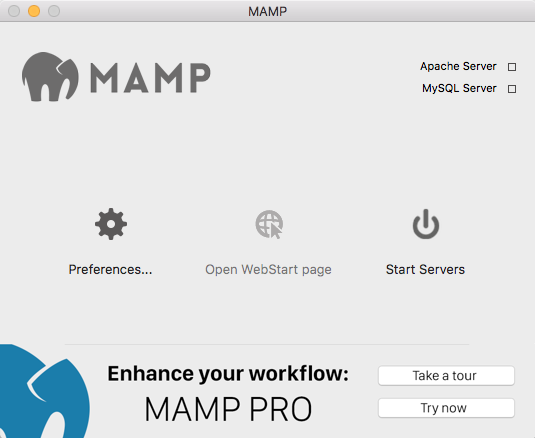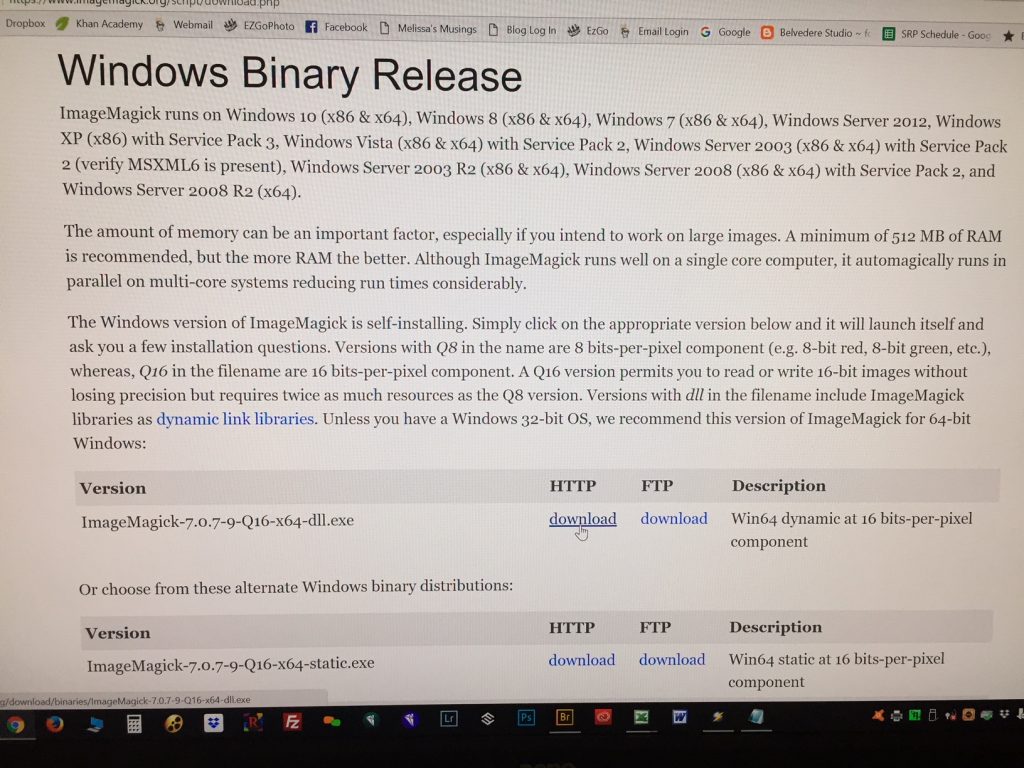Imagemagick Download For Mac

ImageMagick is free software: it is delivered with full source code and can be freely used, copied, modified and distributed. Its license is compatible with the GPL. It runs on all major operating systems.
Most of the functionality of ImageMagick can be used interactively from the command line; more often, however, the features are used from programs written in the programming languages Perl, C, C, Python, PHP, Ruby, Tcl/Tk or Java, for which ready-made ImageMagick interfaces (PerlMagick, Magick, PythonMagick, MagickWand for PHP, RMagick, TclMagick, and JMagick) are available. This makes it possible to modify or create images automatically and dynamically. ImageMagick supports many image formats (over 90 major formats) including popular formats like TIFF, JPEG, PNG, PDF, PhotoCD, and GIF. Features:.
Convert an image from one format to another (e.g. PNG to JPEG). Resize, rotate, sharpen, color reduce, or add special effects to an image. Create a montage of image thumbnails.
Imagemagick Download Mac Os X
Create a transparent image suitable for use on the Web. Turn a group of images into a GIF animation sequence. Create a composite image by combining several separate image. Draw shapes or text on an image. Decorate an image with a border or frame. Describe the format and characteristics of an image.

Mac OS X-specific Build instructions In order to install ImageMagick on OSX, you will first need Apple's 'Xcode', which you can get by going to the AppStore and searching for 'Xcode' and installing it. Next, you will need to install the 'Xcode Command Line Tools' which includes the compiler. You can install those by running the following command in the Terminal: xcode-select -install Now that you have the necessary tools, you have a choice of how to install ImageMagick. The simplest method is to use 'homebrew', and that method is shown first below. The alternative method is to install from source, which is shown afterwards. ################################################################################ Method 1: Using 'homebrew' ################################################################################ Go to and copy the one-liner that installs 'homebrew'. Paste that into the Terminal and run it.
For the very simplest, fastest, most basic ImageMagick installation, run: brew install imagemagick Test your installation by running: identify -version If you want to add support for extra features, such as HDRI, Perl, JPEG2000, pango,fftw, TIFF or rsvg etc. You can find the necessary switches by running: brew options imagemagick then find the options you need and apply them like this: brew reinstall imagemagick -with-jp2 -with-librsvg -with-quantum-depth-16 -with-pango If you have any problems with 'homebrew', simply run: brew doctor and follow the doctor's advice. ################################################################################ Method 2: Compile from source - not necessary if you used 'homebrew' method ################################################################################ Perform these steps as an administrator or with the sudo command: Install MacPorts. Download and install and type the following commands: $magick sudo port -v install freetype +bytecode $magick sudo port -v install librsvg $magick sudo port -v install graphviz +gs +wmf +jbig +jpeg2 +lcms This installs many of the delegate libraries ImageMagick will utilize such as JPEG and FreeType. Use the port command to install any delegate libraries you require, for example: $magick sudo port install jpeg Now let's build ImageMagick: Download the ImageMagick source distribution and verify the distribution against its message digest. Unpack and change into the top-level ImageMagick directory: $magick tar xvfz ImageMagick-6.5.9-0.tar.gz $magick cd ImageMagick-6.5.9 Configure ImageMagick: $magick./configure -prefix=/opt -with-quantum-depth=16 -disable-dependency-tracking -without-perl Build ImageMagick: $magick make Install ImageMagick: $magick sudo make install To verify your install, type $magick /opt/local/bin/identify -list font to list all the fonts ImageMagick knows about. Copy lines.
Copy permalink. Go.
Comments are closed.